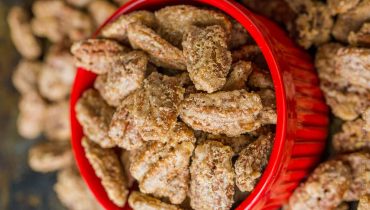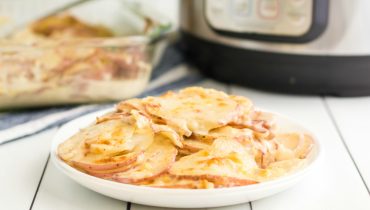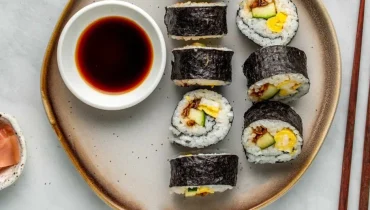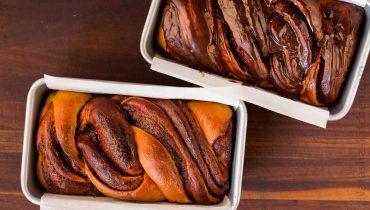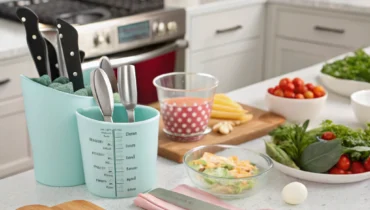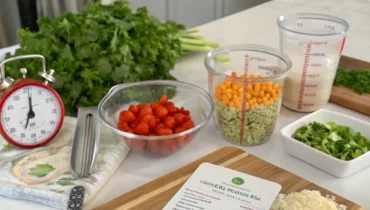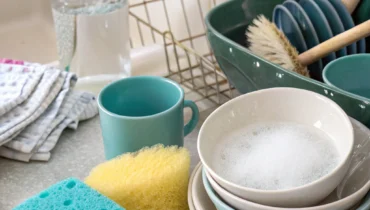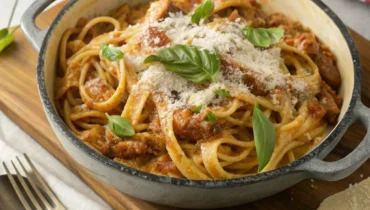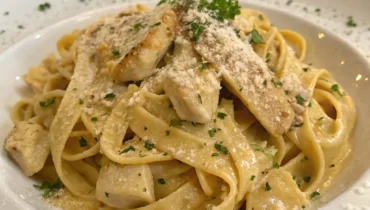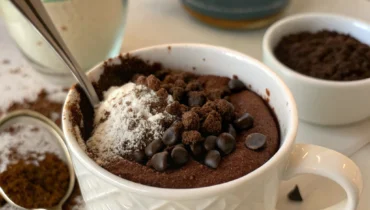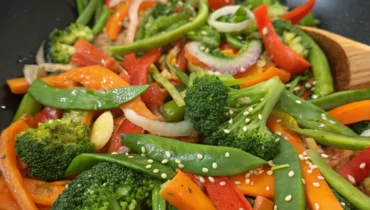The best lobster tail recipe
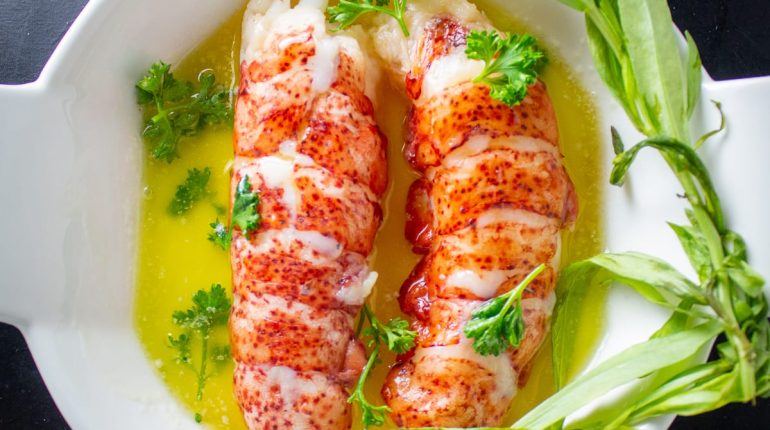
Posted August 22, 2023 by: Admin
Enjoy this impressive and succulent Butter Poached Lobster Tail Recipe for a special occasion like Valentine’s Day, New Years or a birthday celebration. Perfectly cooked every time with just 3 simple ingredients. A truly decadent treat!
With a few tips, this recipe is especially easy as no additional browning step is necessary with most sous vide cooking.
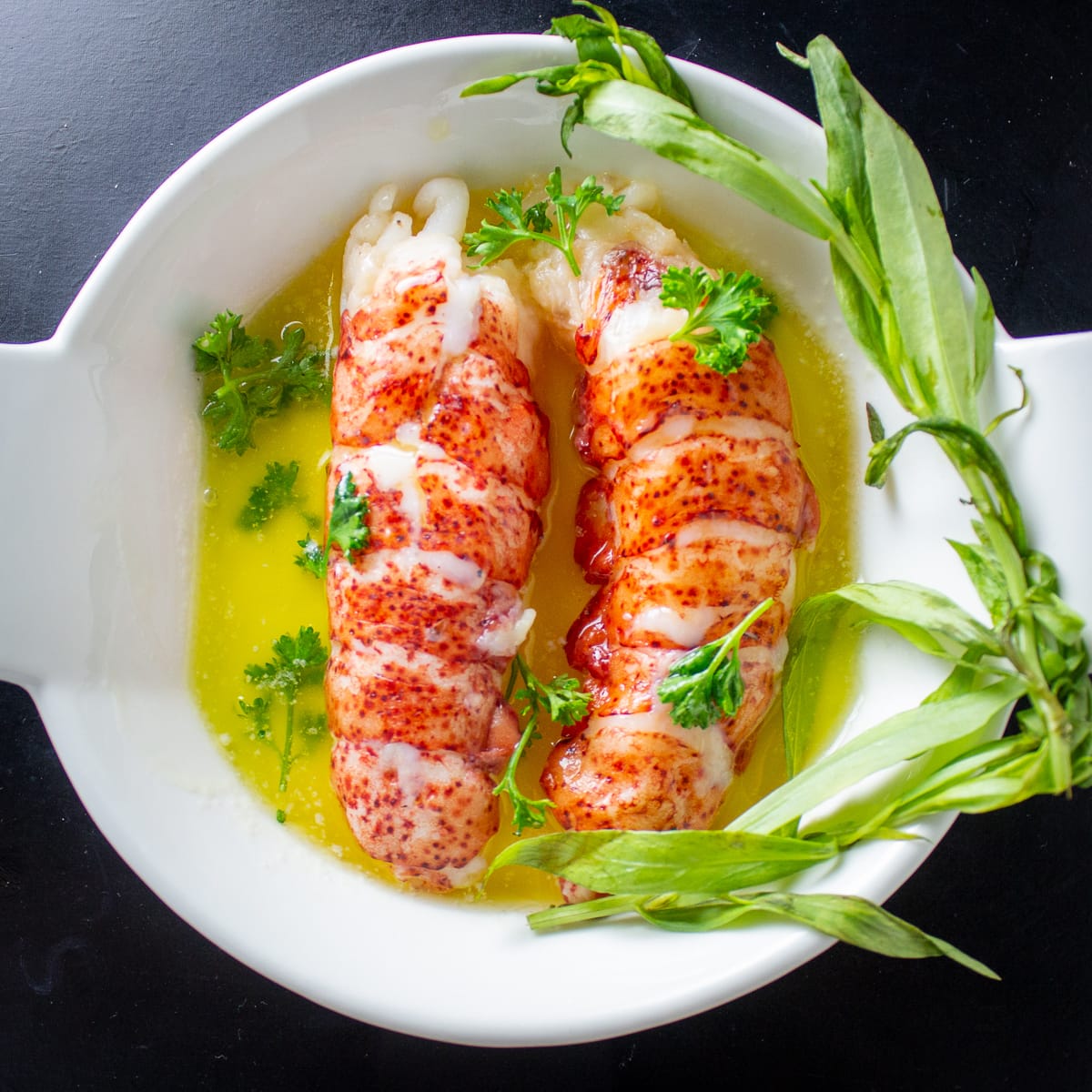
For the recipe, all you need are 3 ingredients: lobster tails, butter, and tarragon. If you don’t have or don’t like tarragon (a classic combination with butter), you can use other fresh herbs. A splash of lemon juice is also a perfect complement and pairing if you like lemon.
Tips: The hardest part of the recipe is removing the lobster tail meat from the shell. But don’t worry, it’s not that difficult and we have a video to help you if you need it. The only other tip is to defrost the lobster tails, which you can do overnight in the fridge or faster (see FAQ).
Traditional methods vs sous vide method
While lobster tails can be successfully broiled, boiled, steamed, or baked, all of these more traditional methods have one drawback in common. It’s just too easy to get overcooked lobster with a rubbery texture. Especially if you are cooking lobster tails for the first time or infrequently.
The sous vide method uses precise temperatures that will cook lobster tails in a sous vide water bath to the exact doneness you choose, every time. With such an expensive delicacy, this is a great stress reducer. It’s the easiest way to achieve virtually guaranteed perfection.
Cooking time and temperature
Choosing the best temperature is the only guesswork you’ll have the first time you make the recipe. You will need to experiment with these options to find your sweet spot.
- 130F/54.4C: tender, juicy, slightly translucent
- 136F-138F/57.8-59C: tender, succulent, little to no translucency (this is my preference)
- 140F/60C: tender, slightly firmer, similar to a steamed lobster
- 150F/65.6C: firm, closer to traditional texture
You can of course try any temperature in between.
How to serve sous vide lobster tails
The beauty of this lobster tail recipe is that it can be served on its own as a buttery lobster tail with the bag of liquid butter (or extra butter) and a squeeze of lemon.
Or with the same tail meat you can do:
- the best lobster rolls, served in traditional hot dog buns
- a delicious instant risotto of asparagus and lemon, sprinkled with diced butter-poached lobster meat.
- a land and sea dinner (drop a fillet in a sous vide bag in the same water bath 1/2 hour before putting the lobster in)
As for garnishes, these are some of my favorites:
Adapt to your taste
- Fresh Herbs: Tarragon is classic with lobster. Other good options are chives, cilantro, dill, oregano, and herbes de Provence. If you don’t have fresh herbs, use a pinch of dried herbs (you don’t want to overpower the delicately flavored lobster meat).
- Butter: I use salted (and extra unsalted) butter, but you can also use unsalted butter with a pinch of salt. Feel free to clarify the butter to remove the milk solids, but for this recipe it is not necessary as it would only affect the appearance since you are not frying with it.
- Use the lobster in different ways: Instead of eating the lobster tails with butter, repurpose them with one of the suggestions above, for example, in lobster rolls.
How to make lobster tail sous vide
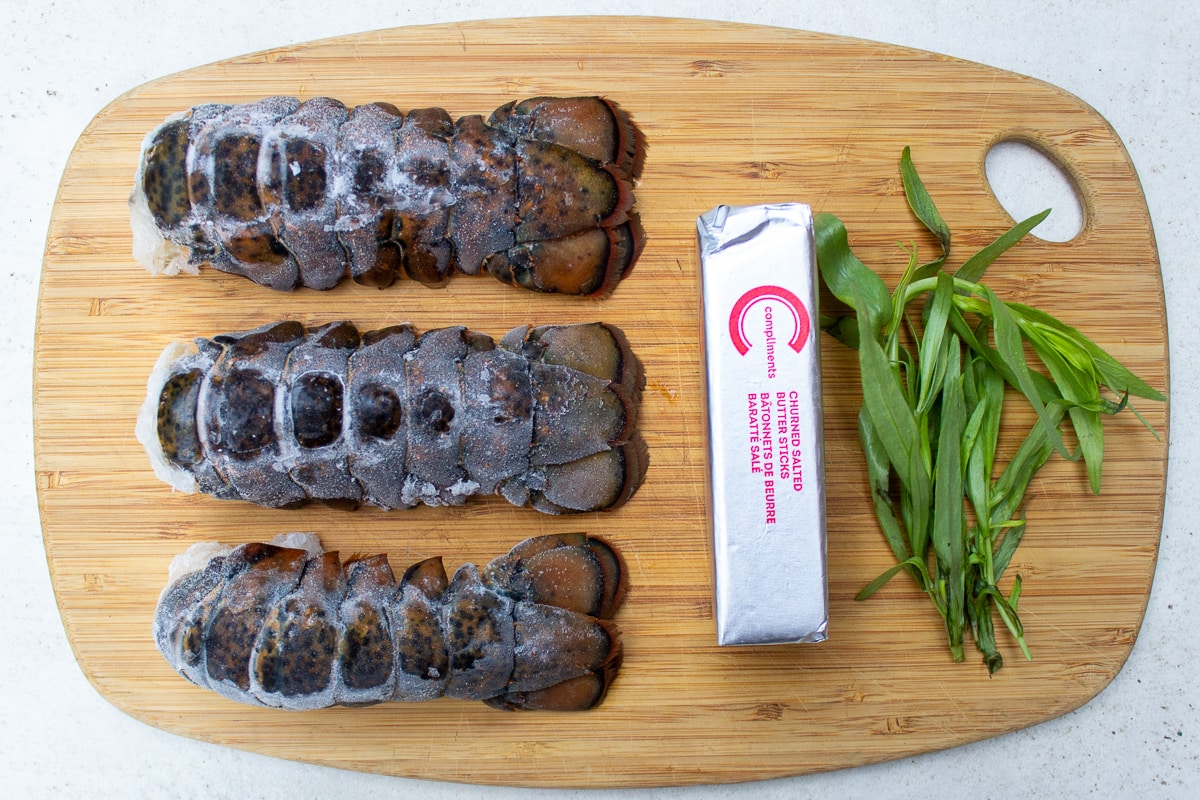
Ingredients: frozen in-shell lobster tails, butter, fresh tarragon or other herb.

Thaw lobster tails overnight in the refrigerator or quickly in cold water. Use kitchen shears or shears to remove the lobster meat from the shell. See the video link in the recipe card.

Place the lobster in a ziplock bag with butter and fresh tarragon.
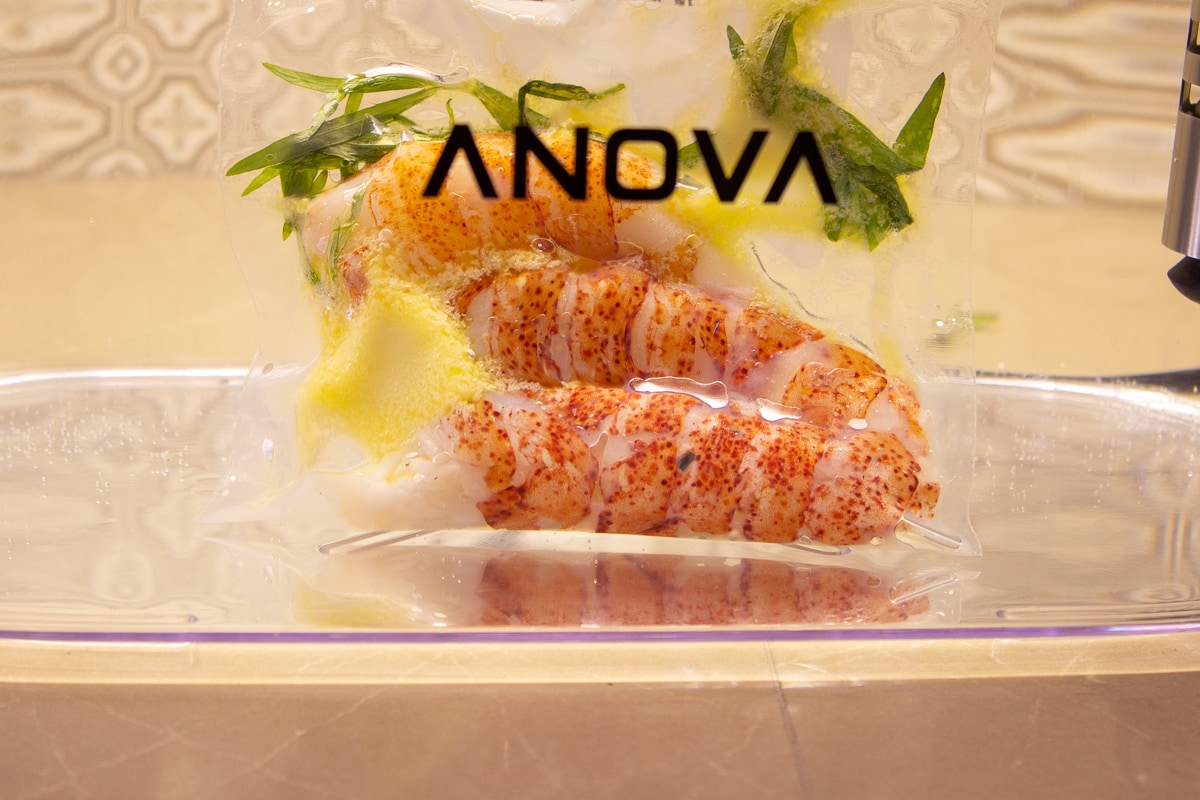
Vacuum lobster tails at the temperature you prefer for 45-60 minutes.
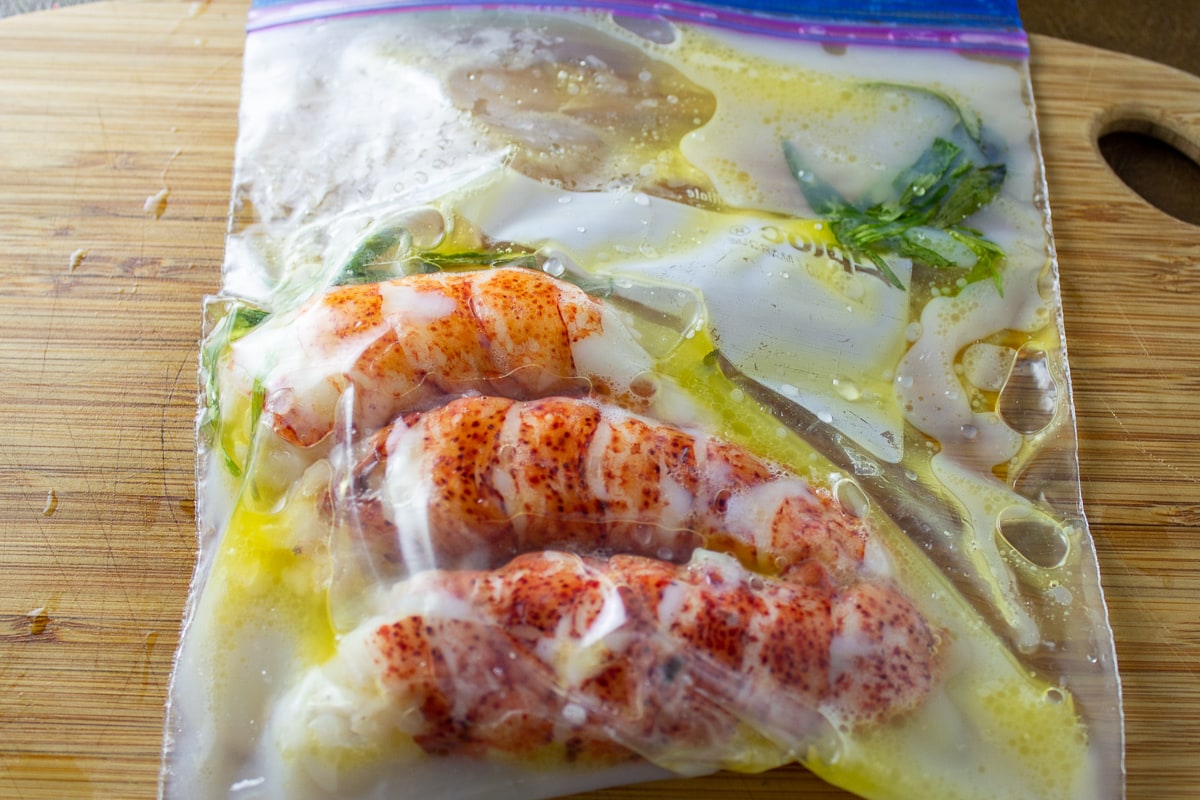
Remove the tail meat from the bag. Pour the sous vide butter sauce mixed with the lobster juice from the bag into a shallow dish (or use additional melted butter). Top with lobster tails and serve.

Sprinkle with parsley or other fresh herbs and serve with a squeeze of fresh lemon juice.

Or serve it with a garnish (see suggestions) with lemon wedges.
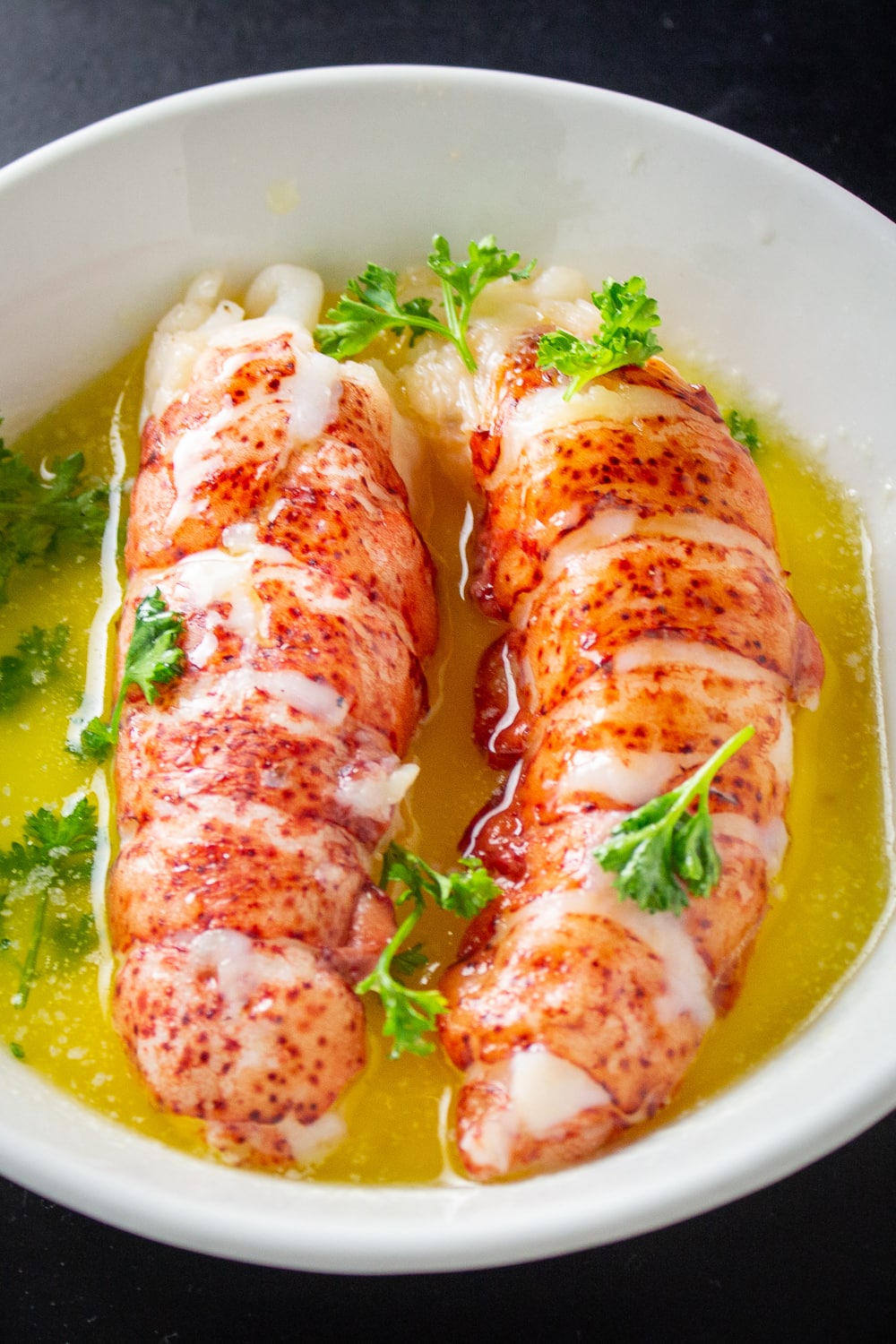
Frequently asked questions
What is a good size for lobster tails?
Most would say that 5 to 12 ounces (141 to 340 g) is the best size per cola. Some believe that tails in the smaller range are sweeter and more tender.
What is the best type of lobster tail to buy?
There are two types: warm-water lobsters (from eg Florida, California, Caribbean, Australia) and cold-water lobsters (from eg Canada and Maine). Most places agree that the more expensive cold-water lobster is superior: more tender, whiter meat, and cleaner flavor. Warm glues are not as reliable (they can get mushy when cooked longer) and are mentioned by some as having a slight ammonia odor.
How much lobster tail should I calculate per person?
Allow for 5 to 10 ounces (141 to 283 grams) per person, depending on what you can afford and the size of those eating. The buttered lobster is quite tasty so keep that in mind. One or two tails per person is a good portion.
Can you sous vide lobster claws?
You can, but the meat on the claws is hard to remove from the shell in one piece, so I’d say sous vide isn’t the best option. Claw meat also needs a different temperature, closer to 150°F (65.6°C), but the cooking time is the same.
Can you cook frozen lobster tails?
It would be difficult to remove the meat from a frozen tail, so it’s best to thaw the tails first. However, it is possible to cook a frozen lobster tail by leaving the shell on while cooking. Just add 30 minutes to the cook time. Then remove the meat from the tail after the cooking process.
What should I look for when buying lobster tails?
Look for a label on the package that says only “lobster.” Try to avoid glues that include tripolyphosphate (preservative). Look for tails that do not have discoloration or black spots on the lobster meat. It is safest to buy frozen lobster tails unless you buy them from a reputable fishmonger.
advance
- Store. Remove from the sous vide water bath, immerse the bag in an ice bath for 5 to 10 minutes. Transfer to the refrigerator for 2-3 days. Or take it out of the bag, place it in an airtight container, and store it in the refrigerator for up to 4 days (if the shell is removed from the lobster).
- To reheat: Place the lobster in a ziplock bag, heat a sous vide machine or water bath to 120°F, submerge the bag using the water displacement method, and reheat for about 20 minutes.
Do you love cooking sous vide?
Try our best sous vide recipes with tips for beginners
Easy sous vide lobster tail recipe
Enjoy this easy, impressive and succulent recipe for butter poached lobster tail for a special occasion. Perfectly cooked every time with just 3 simple ingredients. A decadent delight!
Kitchen ModePrevent your screen from darkening
- HEAT SOUS VIDE BAIN-MARIE: to the desired temperature, Note 4.
- REMOVE TAIL MEAT FROM SHELLS: Using kitchen shears or shears, cut half off bottom of shell. Pry both sides of the shell open with your fingers, opening the shell. Use a tablespoon (slide it between the meat and the shell) to lift the meat out of the shell. Or use your fingers to pull it out. Here is a video on how to remove the tail from the shell.
- BAGGED LOBSTER TAIL MEAT: Place lobster meat in a ziplock bag (to use the water displacement method). Add 3 tablespoons of butter and tarragon or another herb. If the butter is unsalted, add a pinch of salt. Alternatively, use a vacuum-sealed bag and seal it with a vacuum sealer.
- SOUS VIDE LOBSTER: Cook lobster tails in a sous vide water bath for 45 minutes to 1 hour.
- FINISH AND SERVE: Remove lobster tails from bag. Pour the liquid from the bag into a shallow bowl, place the lobster tail(s) on top, sprinkle with parsley or tarragon, and squeeze lemon juice or serve with lemon wedges.
- How to buy lobster tails: Buy 2-3 tails for two people, depending on the size. Figure 2 per person if 4 to 6 ounces (113 to 170 grams) or one per person if 7 to 12 ounces (198 to 340 grams). If possible, buy premium cold-water lobster tails, avoiding packages that say tripolyphosphate (preservative).
- How to defrost lobster tail (2 options):
- Thaw overnight in the refrigerator, or
- Place them in a bowl of cold water (you can put them in a bag if you want) for 10-15 minutes.
- Fresh herbs: If you don’t have tarragon or don’t like it, try fresh chives, oregano, dill, or cilantro. Or a pinch of dried herbs such as herbes de provence.
- Temperature adjustment for sous vide bath. Choose the best temperature for you.
- 130F/54.4C: tender, juicy, slightly translucent
- 136F-138F/57.8-59C: tender, succulent, little to no translucency (this is my preference)
- 140F/60C: tender, slightly firmer, similar to a steamed lobster
- 150F/65.6C: firm, closer to traditional texture
- Forward:
- Store. Remove from the sous vide water bath, submerge the bag in an ice bath for 5 to 10 minutes. Transfer to the refrigerator for 2-3 days. Or take it out of the bag, place it in an airtight container, and store it in the refrigerator for up to 4 days (if the shell is removed from the lobster).
- To reheat: Place the lobster in a ziplock bag, heat a sous vide machine or water bath to 120°F, submerge the bag using the water displacement method, and reheat for about 20 minutes.
Nutritional values are estimates and will depend on the size of the lobster tails and the amount of butter used.
Calories: 183kcal | Carbohydrates: 1g | Protein: 7g | Fat: 17g | Saturated Fat: 11g | Polyunsaturated fats: 1g | Monounsaturated fats: 5 g | Trans fat: 1g | Cholesterol: 96mg | Sodium: 318mg | Potassium: 100mg | Fiber: 1g | Sugar: 1g | Vitamin A: 547 IU | Vitamin C: 1mg | Calcium: 44mg | Iron: 1mg
We’d love for you to rate it above on “rate this recipe” or in the comments section below. Thank you!


